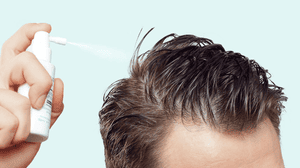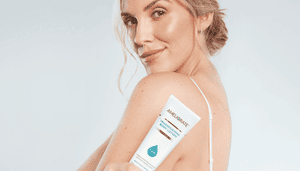
Autumn has well and truly arrived, and after lounging in the sun, either abroad or at home, lots of us would love to extend the lifespan of our tans as the weather gets colder. Many of us are now more aware of the risks associated with excess sun exposure, so now we are far less willing to skip the sunscreen and shade for a little bronze. This is where self-tan comes in. However, the threat of streaks, orange hands, and patchy application, puts a lot of people off.
First thing you need to consider when applying a self-tan is skin type: different skin types have different needs, and this means that you will need to consider different methods when applying a self-tan.
The Ameliorate Guide for Self Tanning: Normal to Dry Skin Edition
Let’s start with normal to dry skin. For an even application, self-tan preparation is crucial. The skin should be as smooth a canvas as possible. The self-tan can work smoothly following these steps.
The first piece of advice for self-tanners is to always shave at least 24 hours beforehand. By doing so, you'll ensure that your hair follicles have had time to shut, and the product won't overload your pores. This can lead to the kind of speckled-leg appearance that you probably want to avoid.
The next step is to concentrate on the skin's surface; the finished product should be smooth and moisturised.
Step 1: Exfoliate
When should you exfoliate before tanning? We've established that we want to prepare for a smooth base. You face the danger of having opened pores if the application is made too quickly. However dry rough surfaces attract false tan, creating the dark, unnatural patches that are frequently observed around the wrists or ankles.
So, in a nutshell, the answer is yes, you should exfoliate before self-tanning. But schedule it for around 12 hours before to the application. If you want to tan in the evening, for instance, do it first thing in the morning.
Even though you want to thoroughly cleanse and remove dead skin cells while exfoliating before tanning, it's preferable to steer clear of rough scrubbing. This might irritate the skin, scrape it, which is why we advise utilising a mix of a physical and chemical exfoliation.
Try gently exfoliating dry skin using Ameliorate's Smoothing Body Exfoliant, for instance. Together, Biodegradable Bamboo Granules and Alpha Hydroxy Therapy softly rejuvenate and resurface the epidermis of the skin.
Add a Body Mitt as the next step to completely remove any last rough spots. The revolutionary fabric weave used to make Ameliorate's Exfoliating Body Mitt is softer than a synthetic or natural loofah. To prepare the skin for tanning, use it in conjunction with the Body Exfoliant and sweep in firm circular strokes.
Step 2: Moisturise
Whether you should moisturise before self-tanning is one of the more hotly debated self-tanner advice. The issue here is that applying lotion too soon after application may prevent the substance from reaching the skin. So, how long before self-tanning should you moisturise?
Fortunately, a special LaH6 Skin Hydration Complex with Shea and Cocoa Butters is included in the Smoothing Body Exfoliant. This, together with the use of Coconut Oil, allows this exfoliator to perform double duty as a moisturiser, providing intense hydration for up to 8 hours and relieving any dry skin. Using this all-in-one solution streamlines the lengthy pre-tanning to-do list.
Step 3: Application
Picking the format that you are most comfortable with might take some time, and your skin might react differently to the self-tanner during different times of the year. It will take some trial and error to figure out which self-tanning product works best with your skin, but it will pay off in the long run.
Remember to always do a patch test before applying and aim for a tanner with hydrating actives like coconut oil or shea butter.








